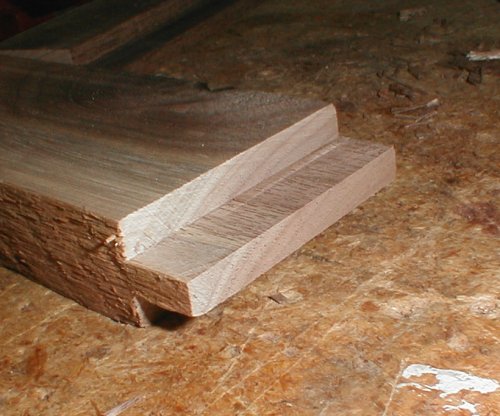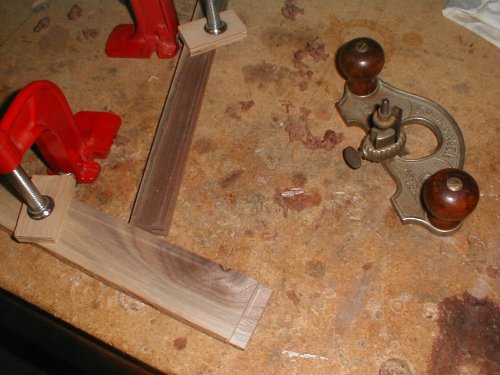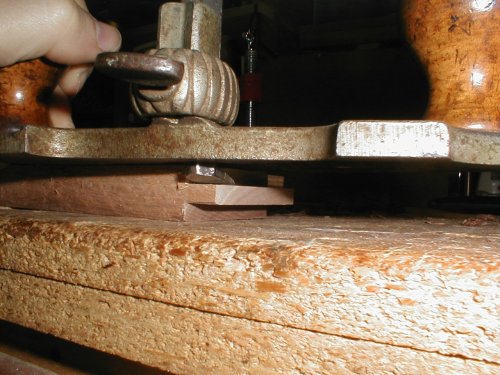| topics |
| back to shop |
| home |
| |
| shop: Foolproof tenon tuning |
|
Foolproof tenon tuning
Tuesday March 30th, 2004 the problem: Getting that perfect fit has proved a challenge for me. Ideally, a mortise should slide into its tenon with only hand pressure (no mallet required) and you should be able to pull it back apart with your hands - no mechanical assistance should be necessary. If it is any tighter, it will be difficult to assemble when the glue applied to both mortise and tenon causes the parts to expand. Any looser and it could result in a weak joint. Despite the fact that I have a thickness planer and usually mill my stock to a uniform thickness at the beginning of a project, it seems that some parts still end up being slightly thicker or thinner than others. Additionally, the process of cutting the tenon faces slightly increases to the existing variation. The result is some joints that are too loose and other that are too tight. failed solutions: To deal with this problem, I usually cut the tenons slightly thicker than I need - this results in a few that fit perfectly, but most are too thick. I then fine-tune the fit by hand. However, I have had significant difficulty in acheiving consistent results in the fine-tuning process. I have tried several methods...with varying results:
my solution: I have found a method that is virtually foolproof for me and allows me to fine-tune the tenon fit in tiny increments. Suprisingly, my tool of choice for this task is a router plane. In my case, it is a Stanley 71 1/2. This plane (and the 71, IIRC) has a threaded adjuster that allows the cutter to be raised/lowered by tiny increments - this allows the thickness of the tenon to be adjusted in tiny increments. The other key is that the cutter is referenced from the face of the stock from which the tenon protrudes. This ensures that the tenon faces remain parallel with the stock...which also means that the tenons maintain a uniform thickness. But enough talk...let's see some pictures: First, here is the stock to be tuned. This particular example is a 1/2" stub tenon from a frame & panel construction.  Next, we need a stable working environment. The force applied to the plane will take the plane cutter across the face of the tenon (across the grain), so the workpiece should be secured accordingly. Here is one example:  To prevent tearout of the shoulders, I score the edge of the face along the shoulder. Some tearout on the far edge of the tenon is almost inevitable. On most M&T joints, it will not be visible, so it does not matter. If the tenon end or edges will be visible, the tearout can usually be avoided by taking very light passes.  Next, place the plane base on the part and lower the cutter so that it barely touches the surface of the tenon face. The micro adjusting feature of the plane can now be used to lower the cutter slightly.  Now, the tenon face can be trimmed slightly. Depending on the application, it may be necessary to trim both sides equally. Since the cutter of the router place can easily be micro-adjusted, I usually take several passes to reach the final result. Of course, this depends on how far off the tenon was from the desired thickness.  And the final result, a perfect-fitting tenon:  A key to the technique is to put downward pressure only on the plane handle that is over the stock. Apply forward pressure only to the opposite handle. It may result in a slightly arcing motion, but that is ok. Take as many passes are necessary to cover the entire tenon face. I have used this technique on tenons up to 1 1/2" long. However, with an additional piece of stock to support the other side of the plane, it may be possible to extend up to 2 1/2" or maybe 3". |
